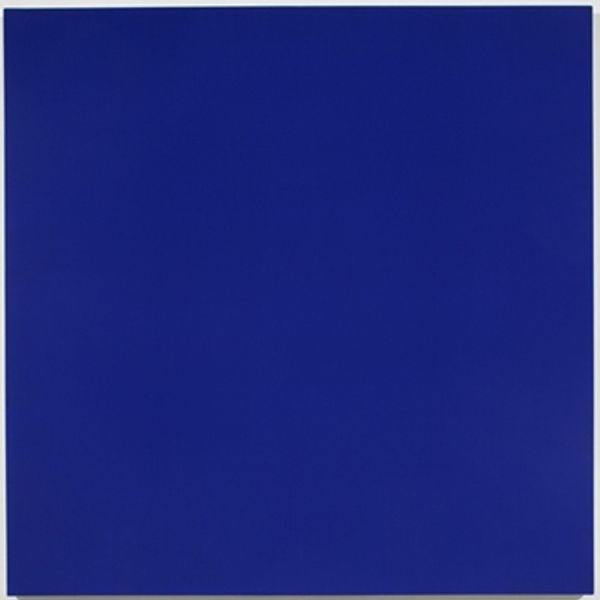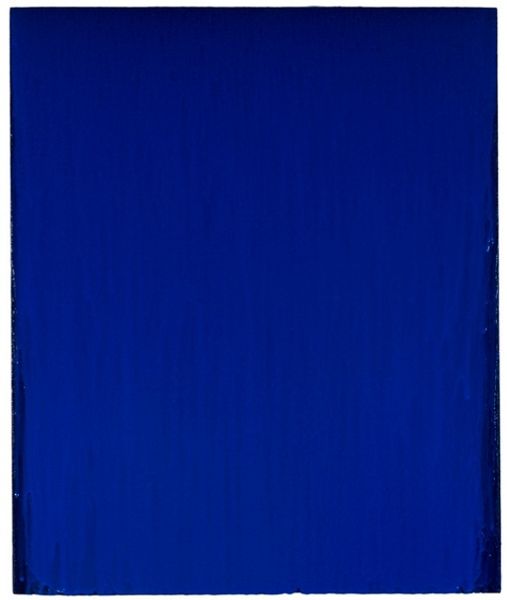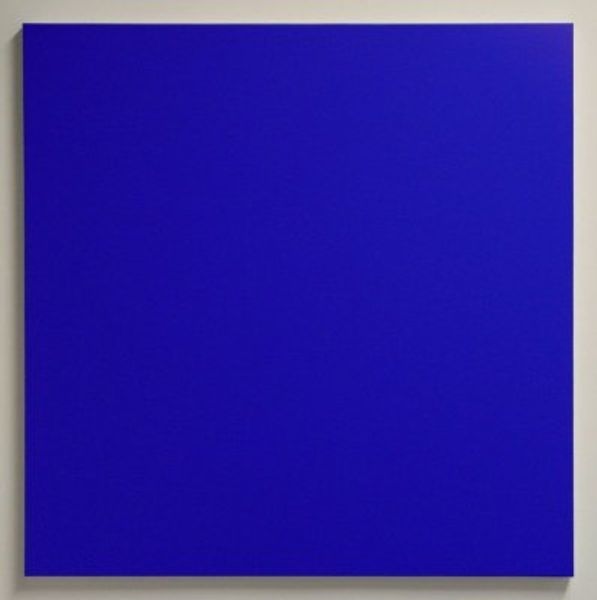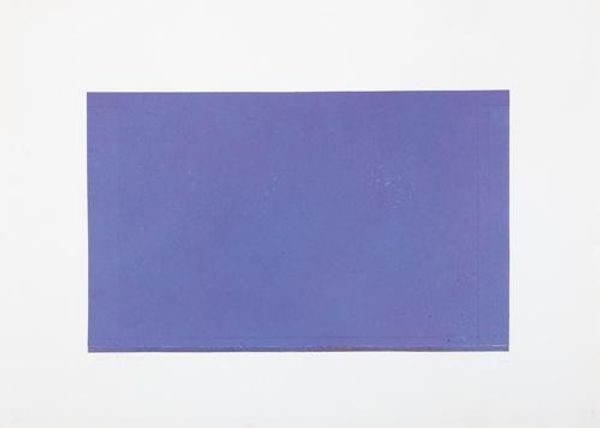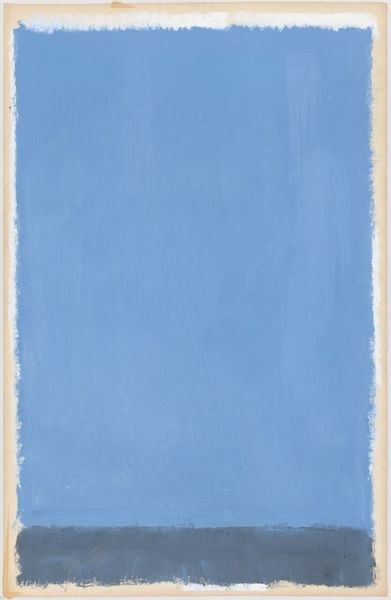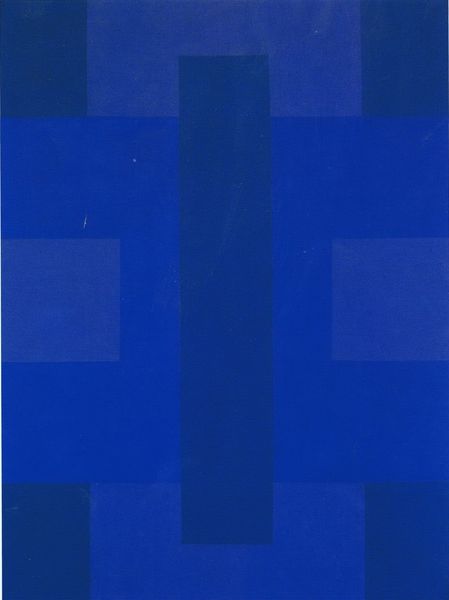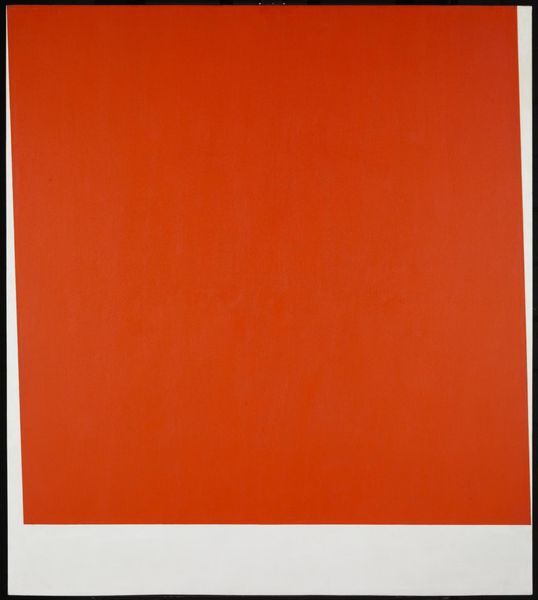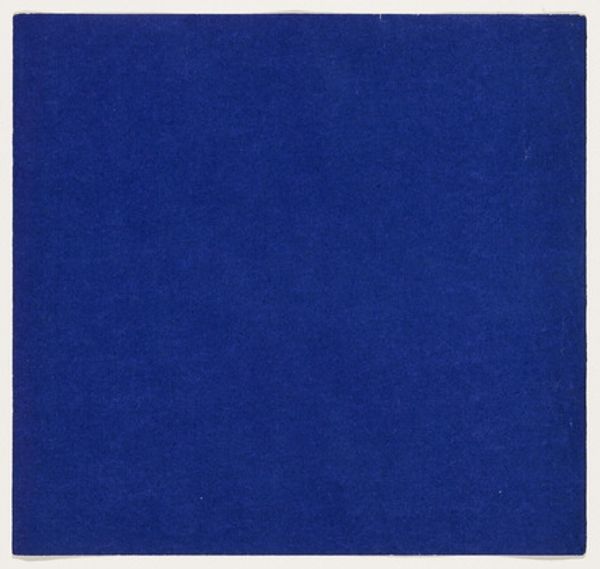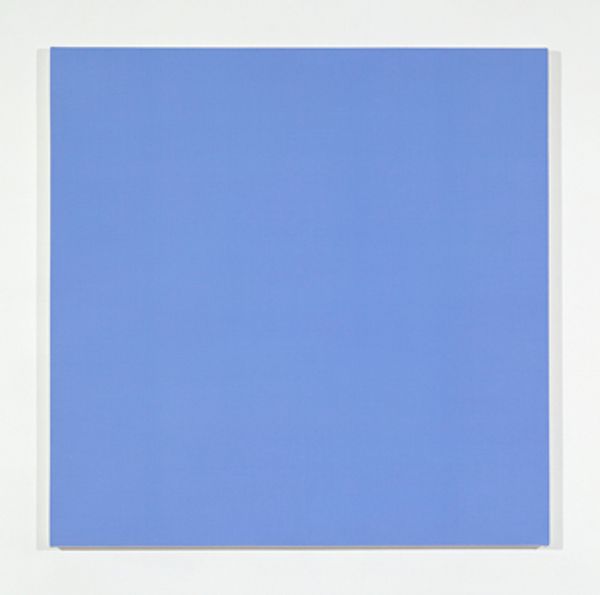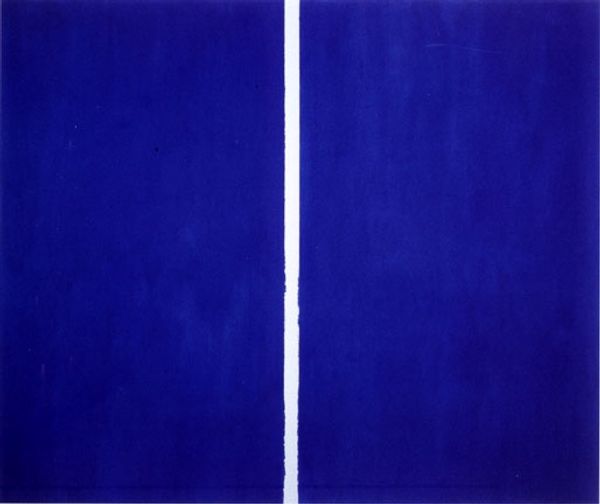
Dimensions: object: 1397 x 1197 x 32 mm
Copyright: © ADAGP, Paris and DACS, London 2014 | CC-BY-NC-ND 4.0 DEED, Photo: Tate
Editor: We're looking at Yves Klein's "IKB 79," housed here at the Tate Modern. It's simply a monochrome blue canvas. It feels almost… aggressive in its simplicity. How do you interpret a piece so devoid of obvious imagery? Curator: Klein's "IKB 79" challenges the very notion of what constitutes art, doesn't it? Consider the post-war context. Art moved away from representation, influenced by existentialism. What role does art play in society if it's not depicting something? Editor: So, the point isn't the blue itself, but the questions it raises about art's purpose? Curator: Precisely. Klein patented this particular shade of blue, International Klein Blue, turning it into a commodity, a brand. This highlights the art world's commercialization, its relationship to the market. It also makes you wonder about artistic ownership and authenticity. Editor: That's fascinating. I never thought of a single colour having such complex layers. Curator: Klein forces us to question the institutions that define and validate art. It's not just a blue painting; it's a statement about the art world itself.
Comments
Join the conversation
Join millions of artists and users on Artera today and experience the ultimate creative platform.
tatemodern 8 months ago
⋮
In 1947, Klein began making monochrome paintings, which he associated with freedom from ideas of representation or personal expression. A decade later, he developed his trademark, patented colour, International Klein Blue (IKB). This colour, he believed, had a quality close to pure space, and he associated it with immaterial values beyond what can be seen or touched. He described it as ‘a Blue in itself, disengaged from all functional justification’. Klein made around 200 monochrome paintings using IKB. He did not give titles to these works but, after his death, his widow assigned a number to each one. Gallery label, November 2005
